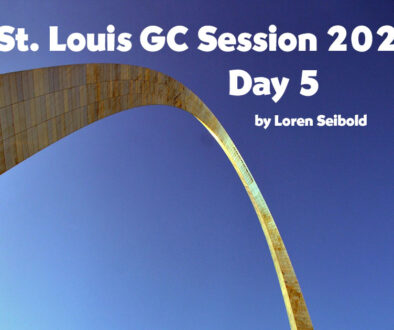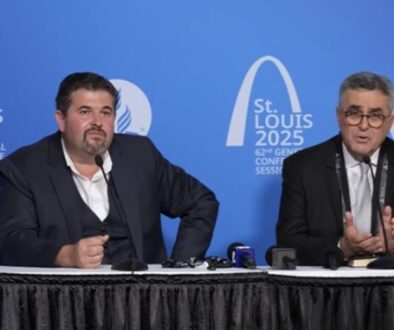Countering Irrational Exuberance
by Mark Gutman
by Mark Gutman, May 22, 2014
Occasionally we read or hear about people who claim to have discovered something in the Bible that nobody had realized was there. They don’t work through official channels, though, because they’ve decided that “new light” will never be channeled through such organizations. After all, look at the beginning of our denomination. Many of the pioneers had to leave other denominations because the leaders were closed off to new light.
Ellen White herself is brought in to support the new idea, with the most used quote (and variations of the quote) as: “There is no excuse for anyone in taking the position that there is no more truth to be revealed, and that all our expositions of Scripture are without an error. The fact that certain doctrines have been held as truth for many years by our people is not a proof that our ideas are infallible.”1
So an enthusiastic Bible reader finds an idea that seems different, startling. After studying carefully for a long time, a la William Miller, the zealous student begins to spread his good news. No sense in asking a committee to look at it or to make suggestions. Either the idea of help is not even thought of, or there is no time for such stuff. Or maybe there’s a fear of having the new idea proven to be faulty.
Dr. Katherine Grobman, a developmental psychologist, writes that she likes to start every semester by presenting her students with a riddle. She tells the students that she has a rule in mind that makes sequences of three numbers, and she wants them to guess the rule. But no one can ask her the rule. Each student is to write down a sequence that fits what he thinks her rule is, then write the rule, and then write down a percent that shows how sure he is of his guess. Grobman then gives the numbers: 2,4,6. The students start guessing, and here’s what is found on a typical sheet:
6, 8, 10 – counting up by two’s– 60% sure This sequence fits.
20, 22, 24 – counting up by two’s – 70% sure This sequence fits.
3, 5, 7 – counting up by two’s – 80% sure This sequence fits.
25, 27, 29 – counting up by two’s – 90% sure This sequence fits.
200, 202, 204 – counting up by two’s – 100% sure This sequence fits.
But “counting up by two’s” is not the rule! How can a student be 100% sure of a flawed hypothesis? Students asked that question often reply that they have plenty of evidence. But this evidence has been gained through “confirmation bias.” The student has only looked for evidence that will confirm his theory. Then Grobman gives the students an example of how the figuring out of the theory should work:
10, 20, 30 – counting up by multiples – 60% sure This sequence fits
100, 500, 894 – counting up with all even numbers – 70% sure This sequence fits.
1, 9, 20 – counting up – 80% sure This sequence fits.
27,13,4 – counting up – 90% sure This sequence doesn’t fit.
55, 2, 999 – counting up – 100% sure This sequence doesn’t fit.
“Counting up” is the rule.2 This time the 100%-sure student is right. But he gained the 100% certainty by purposely trying sequences that would not fit his rule. He tried such sequences until he had covered all the other possibilities. Being very sure of our new theory doesn’t mean that our theory is right, as the first set of students discovered. How much have we tried to disprove our pet theory? How much has it been tested by others? If we’re determined not to let it be disproved, we may fail to ask questions or discourage questions from others who might reveal problems with our theory. Why should we let skeptics keep the good news from getting out?
A December 2, 2013, article on the Washington Post website informs us that “[w]hile on summer break in 2011 at age 15, Jack Andraka made a breakthrough in cancer detection that had eluded pharmaceutical companies and legions of PhDs.” The young man has been featured on 60 Minutes, TED talks, and in articles in such journals as Forbes and Smithsonian. The Post article quotes him as claiming that his test is “168 times faster, 1/26,000 as expensive, and 400 times more sensitive than the current diagnostic tests.” He also boasts that it is 90% accurate.3
Having read glowing stories about this stunning breakthrough, I was naturally puzzled when I read recently that “[t]here is currently no screening test for diagnostic cancer.”4 I did a little research (meaning, I looked online) and quickly found that many of the glowing claims about the new, quick, and cheap diagnostic tool were simply untrue.
The aforementioned Forbes later published an article that provided more perspective on Andraka’s work. Writer Matthew Herper, a science editor, examined Andraka’s claims and explained why they were either exaggerated, disputed, or simply wrong.
So what? The young man got people excited about science and experimenting or getting tested to detect disease early. That’s one perspective. But Herper continues with the downside of the Andraka story.
“By taking a teenager’s excitement and using it to turn him into a folk hero, TED and many, many media organizations including my own have provided false hope to cancer patients and given the general population a distorted view of how medical science works. People might like to believe that cancer researchers have missed something obvious, and that we just need a high school student to come in and create a breakthrough.”5
A budding young scientist rushes to proclaim his breakthrough, never stopping to wonder if he might have overlooked some angles or might be causing false hopes. A budding theologian rushes to proclaim her theology breakthrough, sure she is led by the Holy Spirit and has thoroughly covered all the angles. What does the scientist or theologian have to lose by presenting the material to other veterans in the field? Publicity? A few moments of fame? Had Andraka’s work been “peer reviewed,”6 we would probably never have heard of Andraka. And we wouldn’t have been distracted by many religious theories if they had been “peer reviewed.”
A dozen trained theologians or scientists (and it usually doesn’t take that many) can spot areas we hadn’t thought of. If we’re wanting “truth,” we’ll seek and welcome such input. The input might help us word our theory more carefully or cut back on some of the more extreme parts, or even toss the theory. If we’re seeking truth, what do we have to lose by getting input from others who might know something we don’t? Will a little delay hurt?
Perhaps the biggest evidence I have of Andraka’s problem is the fact that we’re still reading that “[t]here is currently no screening test for pancreatic cancer.”4 If the discovery had been helpful, some scientist, some company, would be promoting it and we’d be hearing stories of many people who’d had their pancreatic cancer discovered at an early stage because of the test. What’s that phrase about “proof” and “pudding?”
When I read material telling me that I should be “using God’s sacred name” or “observing the feast days,” I wonder what theologians the writers have asked for review. When I hear some lectures on the end of the world in 2000 (or whatever year), or that prophecy points to a religious group we hadn’t thought about, I am curious how much “peer review” the speakers have sought. Even if writers and speakers don’t agree with the peer reviewers on some ideas, scholarly questions might still provide insights. I have more reason to think that new material has some merit if “trained” theologians7 have not found reason to take it apart. The next sentence in that earlier quotation was “No true doctrine will lose anything by close investigation.”1
We need to test our theories, and test the theories of others who have “new light” in theology or science or any other field. Accepting without good evidence is more “gullibility” than it is “faith.” Realizing how much we don’t know or even think of, let’s welcome the eyes of those who know things we don’t. Let’s use our heads, and the heads of others.
1Ellen White, Counsels to Writers and Editors, page 35
2https://www.devpsy.org/teaching/method/confirmation_bias.html
3https://www.washingtonpost.com/national/health-science/jack-andraka-marylands-boy-wonder-on-mean-scientists-homecoming-and-tricorders/2013/12/02/e15606be-4173-11e3-a624-41d661b0bb78_story.html – Note: other sources list Andraka’s age as 14; since he was born in 1997, he could not have been more than 14
4Pancreatic Cancer May Become No. 2 Cause of Cancer Deaths, Rachael Rettner, May 19, 2014 – www.livescience.com/45711-pancreatic-cancer-death-2030.htm
5Forbes, Jan 8, 2014, Matthew Herper, Why Biotech Whiz Kid Jack Undraka Is Not on the Forbes 30 Under 30 List – available at https://www.forbes.com/sites/matthewherper/2014/01/08/why-biotech-whiz-kid-jack-andraka-is-not-on-the-forbes-30-under-30-list/
6”Peer review”, according to a California State University website
Definition – The peer review process is integral to scholarly research. It is a process of subjecting research methods and findings to the scrutiny of others who are experts in the same field. The process is considered essential, but has also been criticized as slow, ineffective and misunderstood.
Purpose – The process is designed to prevent dissemination of irrelevant findings, unwarranted claims, unacceptable interpretations, and personal views. It relies on colleagues that review one another’s work and make an informed decision about whether it is legitimate, and adds to the large dialogue or findings in the field.
https://teachingcommons.cdl.edu/cdip/facultyresearch/Definitionandpurposeofpeerreview.html
7Theologians disagree with each other, of course, so for peer review, a conservative will often seek a conservative reviewer, while a liberal asks a liberal to review. But at least some errors due to an ignorance of Hebrew, Greek, or Aramaic languages, as well as archaeology and history, can be caught ahead of time by consulting those who are more trained in those fields.



